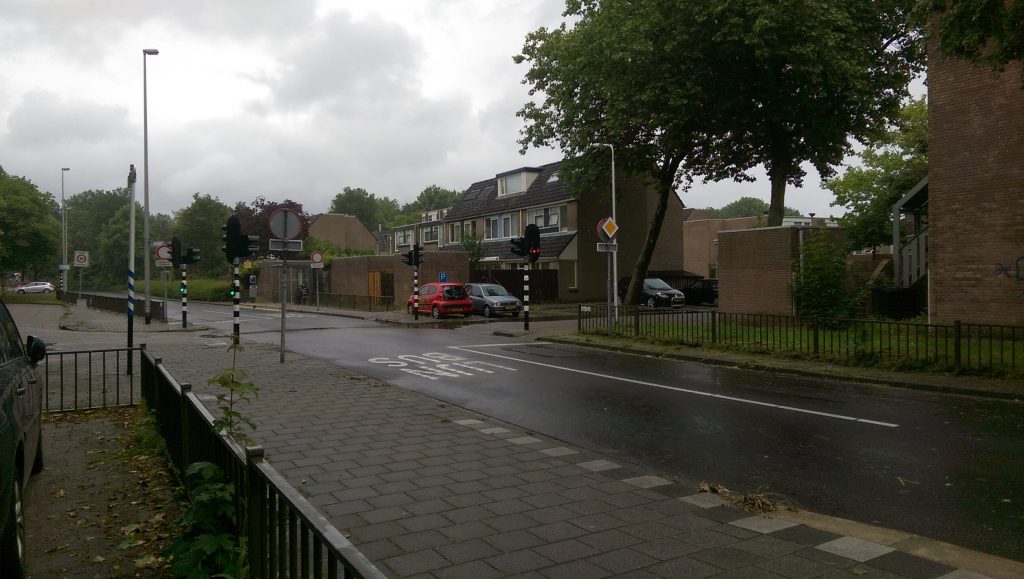Buitenhof (1950s and 1960s)
Buitenhof neighbourhood was generally more car active than the other areas of Delft that I had been. The bike lanes were fully separated from the road, and even the roads were divided by small boulevards in opposite directions. Nearer the hostel the roads aren’t separated, rather bikes are everywhere with cars having limited access. The car traffic on the long straight sections of the road leading up to the boulevards could gain some speed relative to the smaller more residential roads, but no more than 50km/h. The roundabout traffic was significantly slower to 30km/h or below based on the complete ring of the cycle path that everyone yielded to. This was a considerably more comfortable roundabout experience than roundabouts in Vancouver. Roudabouts in Vancouver, especially for bikes are a terrifying experience because people don’t seem to understand how yields actually work.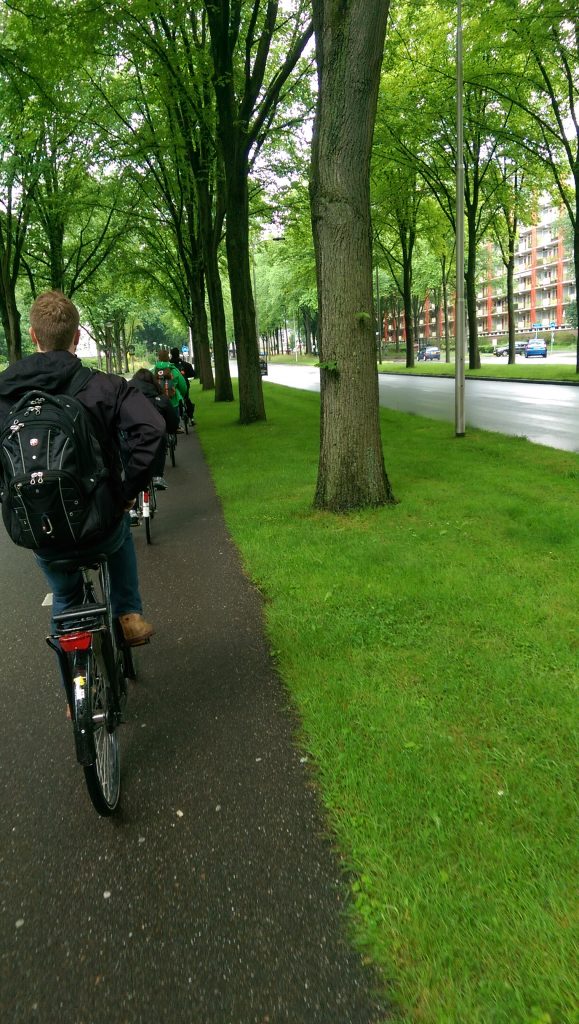
In de Hoeve shopping mall was a pretty standard shopping mall, but more linear in design then the tendency for sprawl in malls back at home. It seemed like a very local mall because there weren’t any shops there that were big brand names that would draw people from far away. There were two chain grocery stores and clothing and delicatessen like shops. Despite only this the mall did have a surprisingly large parking lot, 7 stories.
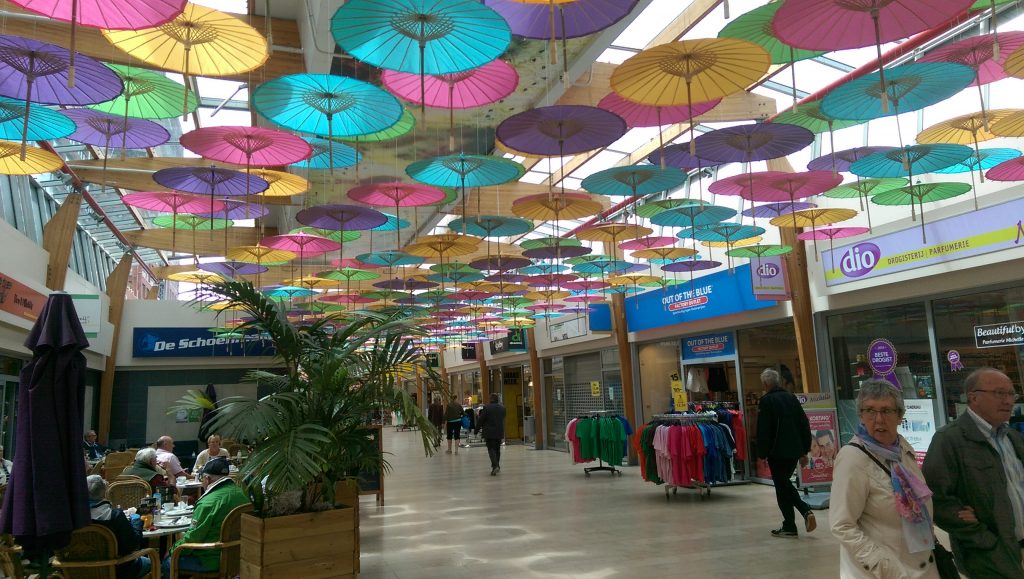
The housing in the area was predominantly larger high rises, much different than the rest of Delft. Also a lot of retrofitting seemed to be going on in the area with buildings being adjusted for modern use. It definitely seemed like a more car friendly part of Delft, but still there was lots of bike traffic and many racks outside shops and public space.
Oost Tanthoff
This neighborhood, despite being mostly 2 or 3 story buildings was still quite densely populated. The roads were narrow, discouraging car traffic and with some roads reserved only for busses. There were bike lanes that wrapped around the area along the canal, but a few sections with traffic calming fences asking you to get off your bike and walk. The houses were definitely a little old, and small, but the ample green space around the canals and several recreation areas (soccer field, basketball court) make the area very inviting and livable. My neighborhood in North Vancouver is similar in its amenities providing public parks in every block and public volleyball courts. But, the roads in my neighborhood are designed for cars and only 1 major East-West street
is a bicycle route (painted bike on the cement, no lane painted or divided).
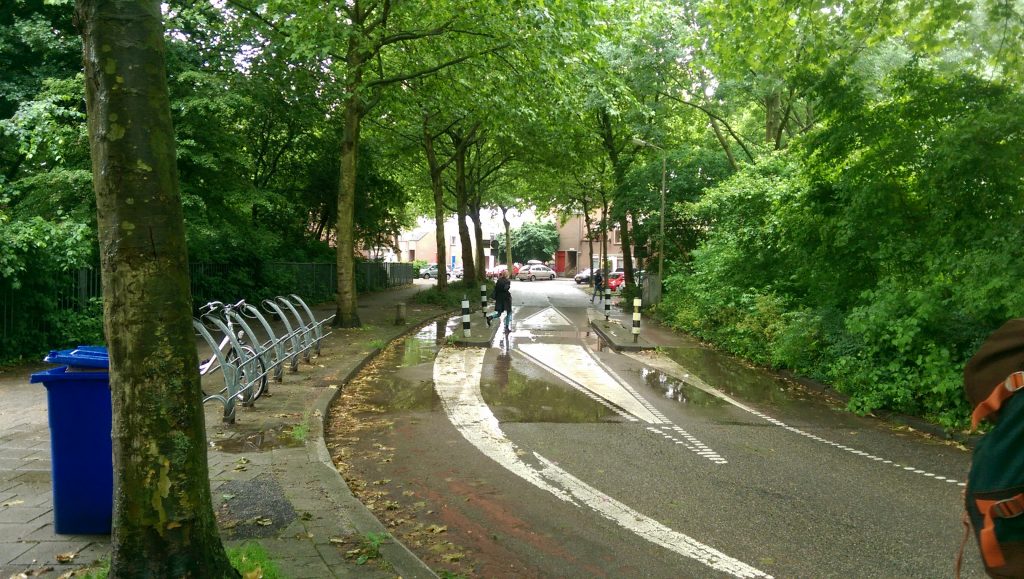
The shopping area is like a Canadian strip mall, except there is no parking lot in the middle, a few spaces only at the back. The middle is blocked off for walking and only has a few bike racks also. It is a space predominantly for those who could walk, offering 1 grocery store, a butcher, a baker and a few smaller shops like hair dressers and florist.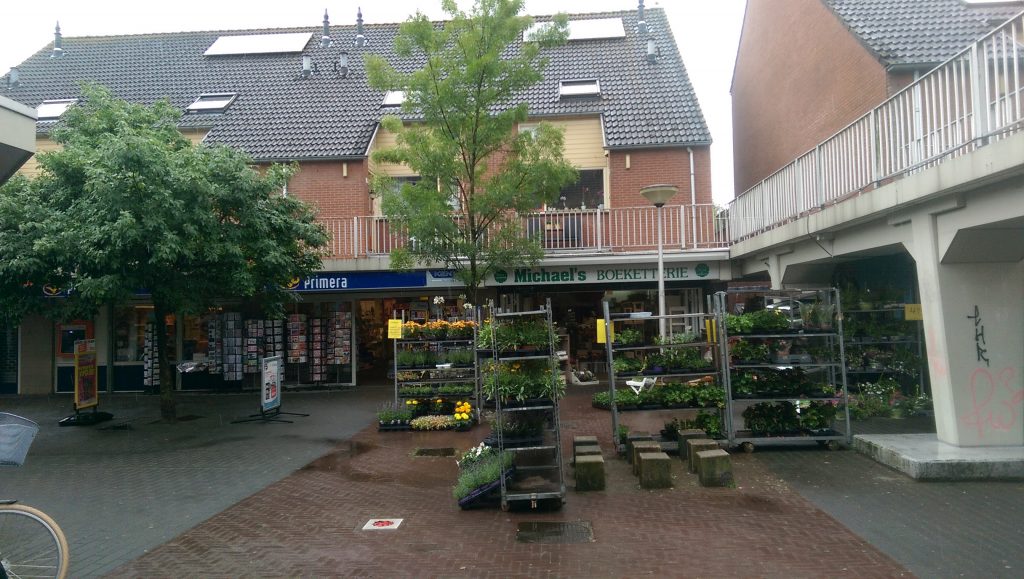
There was a bus that came, but it didn’t appear to have very regular service, and would probably only get you to a neutral transfer destination rather than to where you exactly wanted to go. This aspect of the neighborhood reminded me of where I grew up in West Vancouver, Horseshoe Bay. That was a small community with limited public transportation service and shops that were mostly designed for people to walk to. However again there were main roads that didn’t restrict cars, despite not having much parking, and there is no effort to include bicycles.
